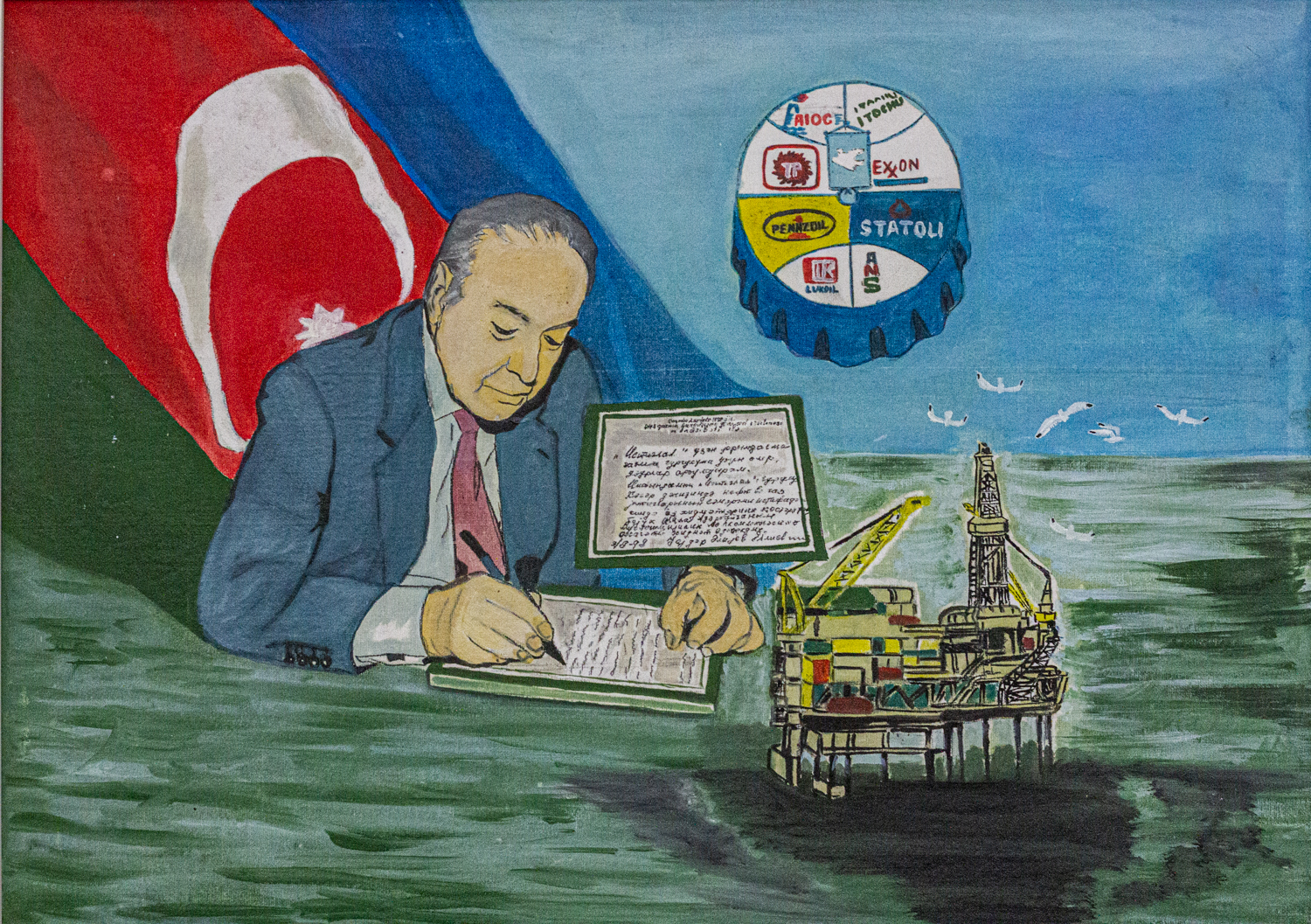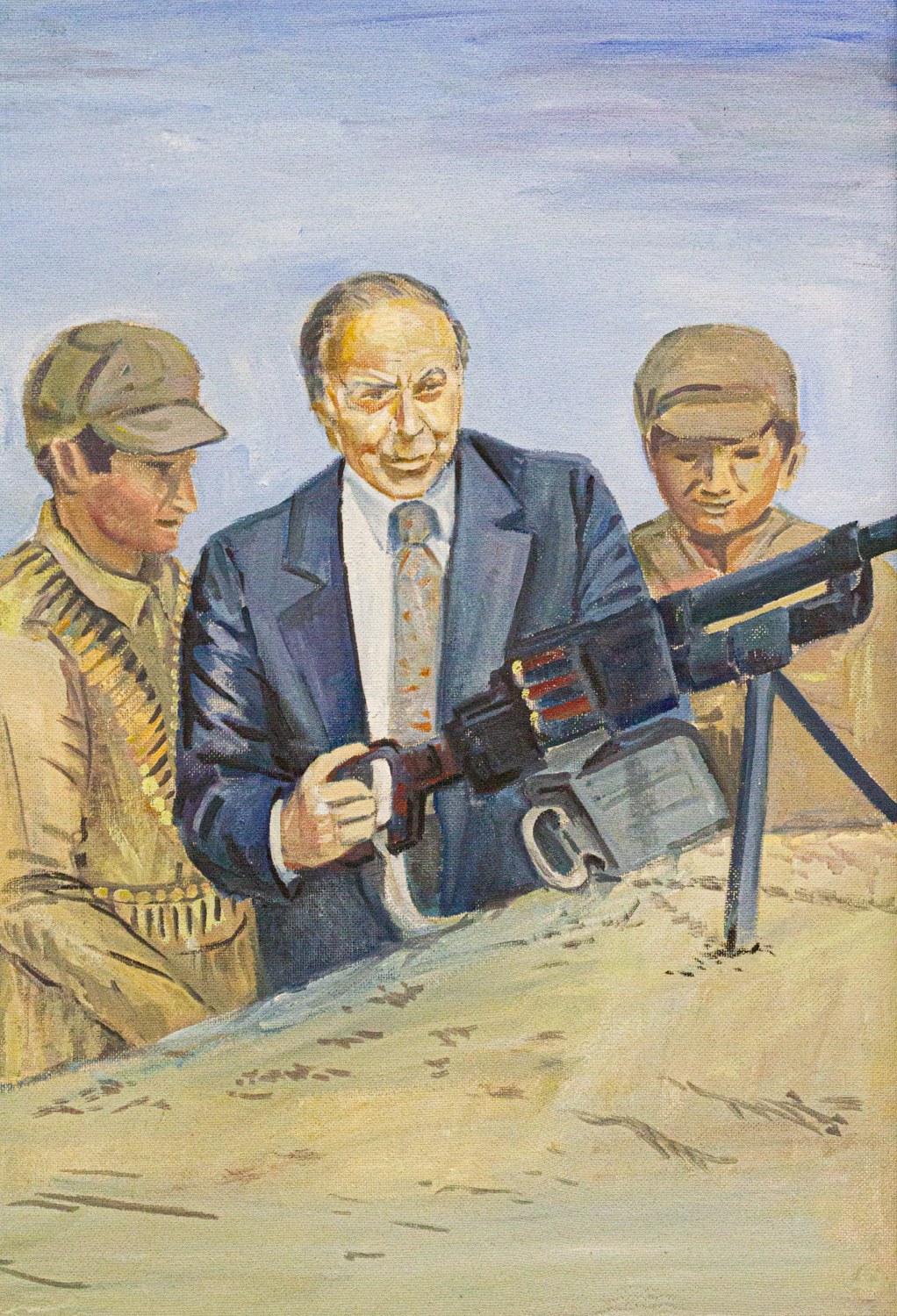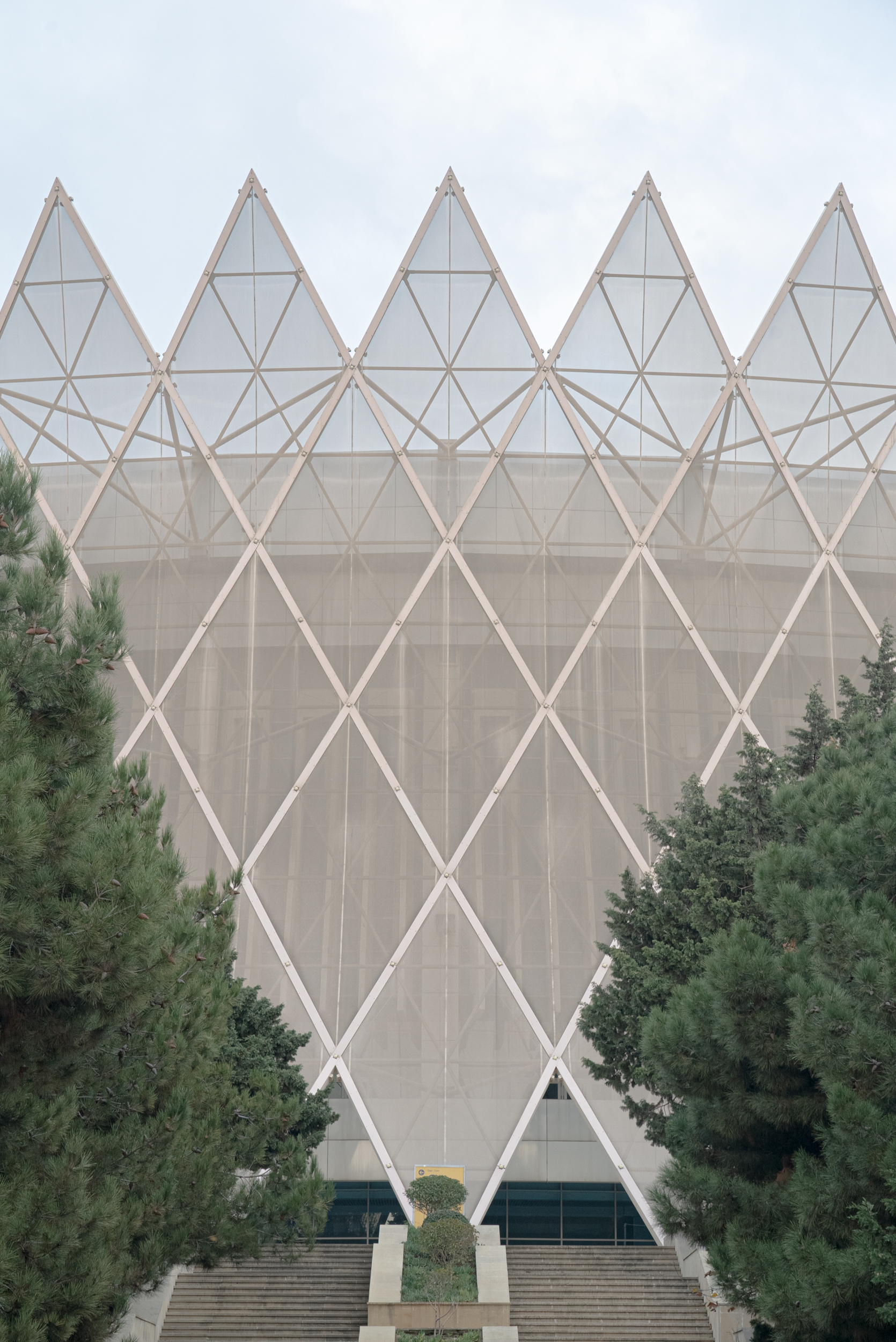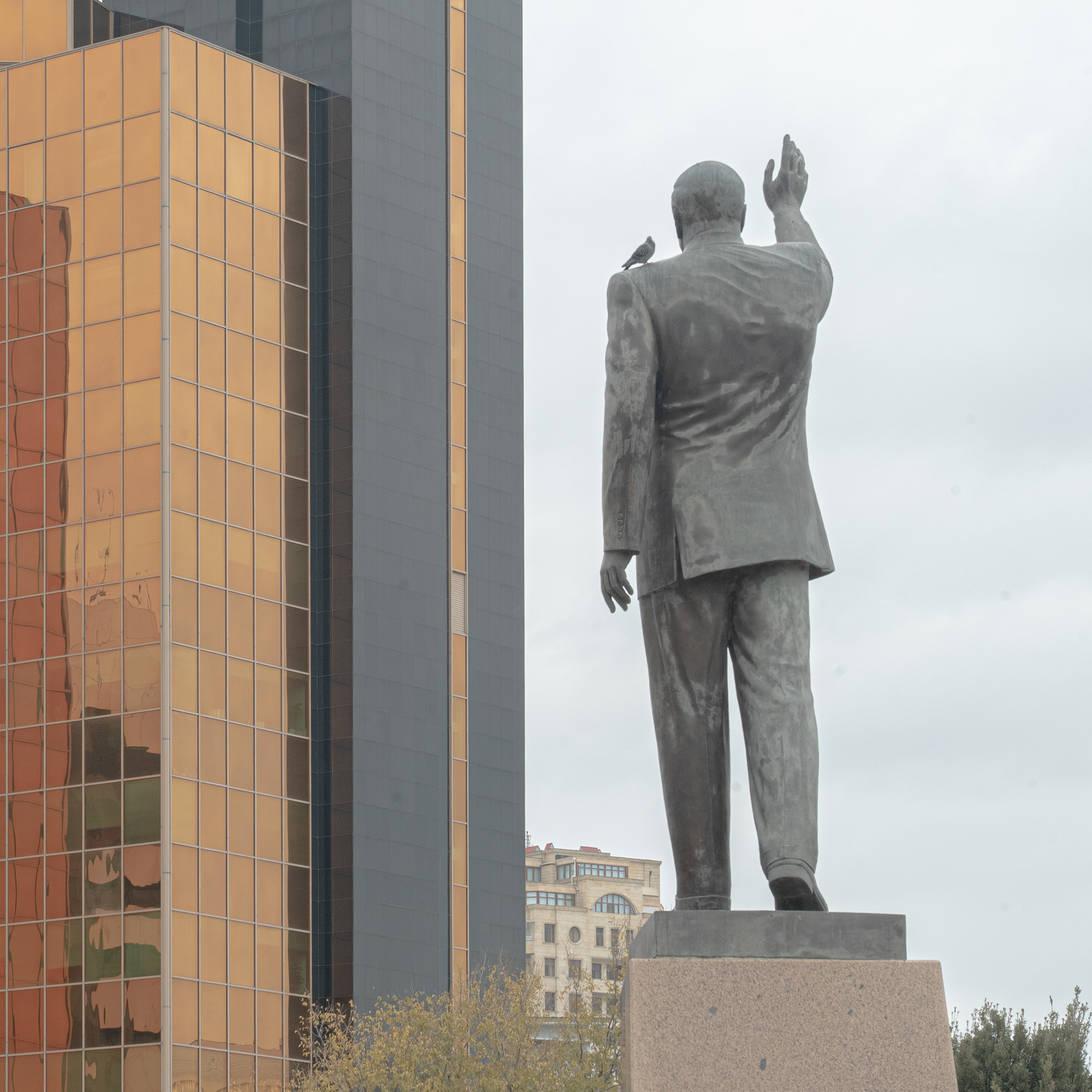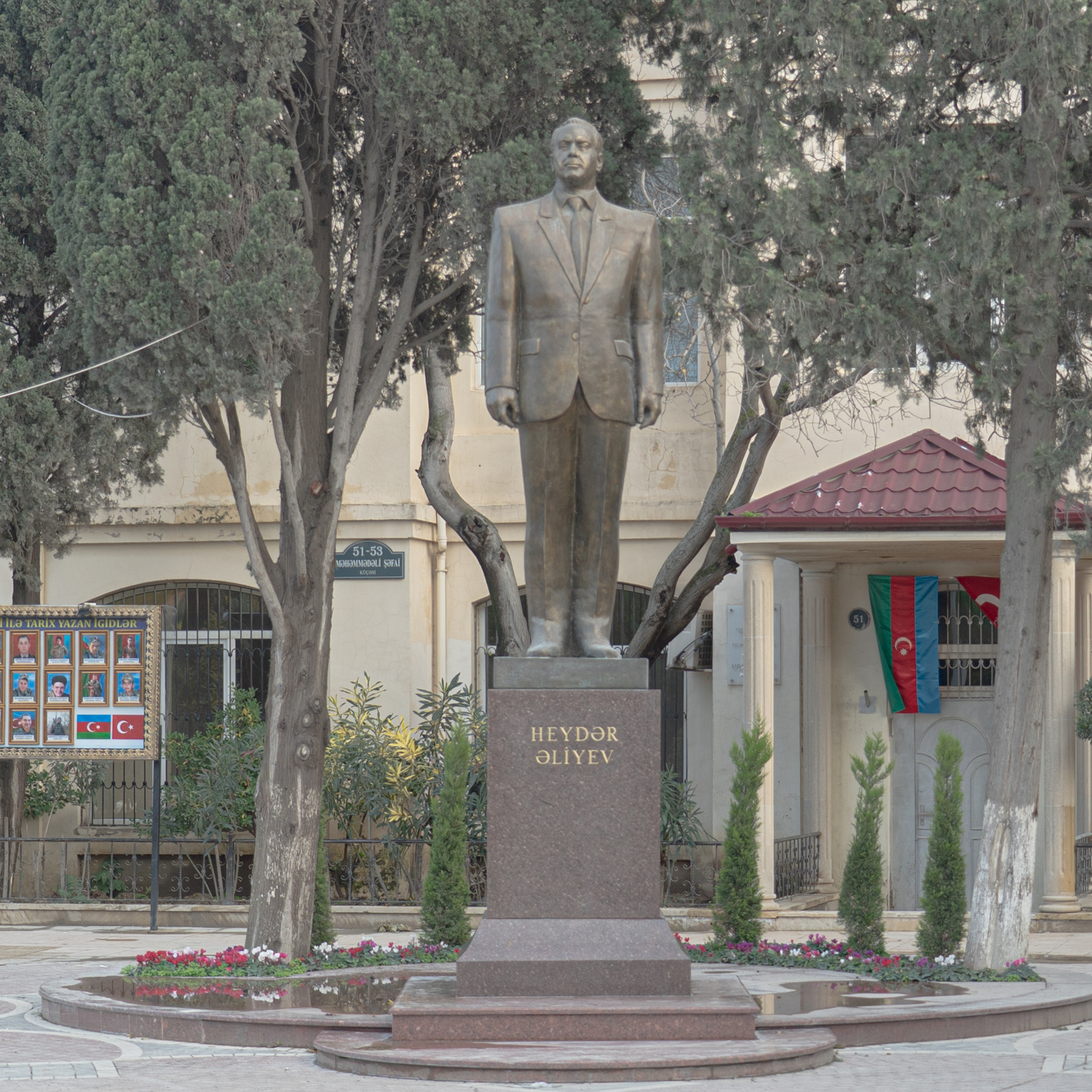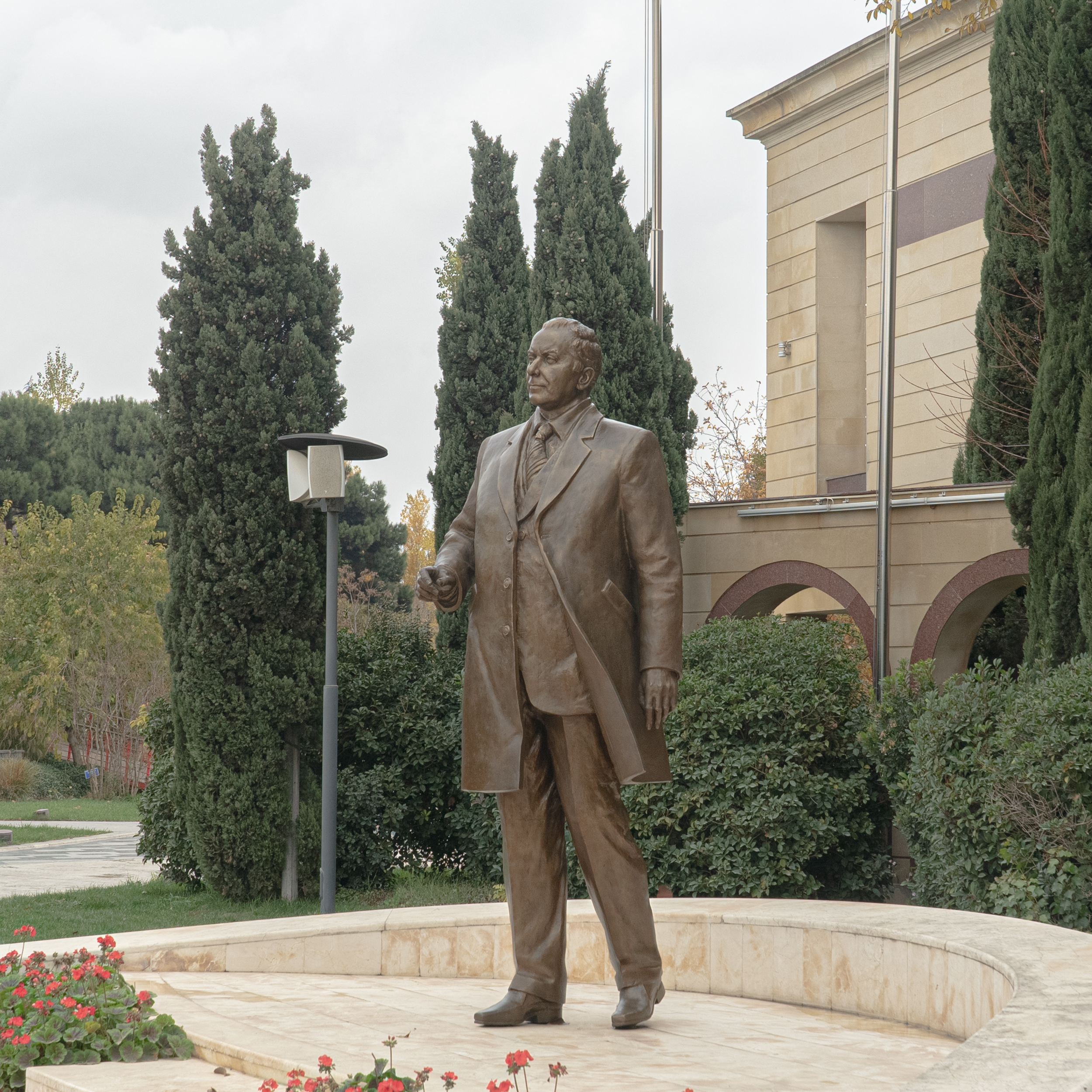He is the father of a nation, the infallible genius, the patron, the “Grandfather.” He peaks at you with a gentle smile from the textbooks you read at school, he looks at you from his portraits hung on the walls of virtually all government buildings and establishments. He may be greeting you at an entrance to a new town, or the Baku Heydar Aliyev International Airport, or you may take a stroll on one of the avenues or parks named after him. He is Heydar Aliyev, and this is your ticket to his cult.
From Azerbaijan to Mexico
As the taxi was approaching Mexico’s Chapultepec Park, I rolled down the window to get a better view of the beautiful green space. I was also anxious to reach a recently renovated part of the park, right on the edge, called Mexico-Azerbaijan Friendship Park. The taxi driver was amused: I was his first customer from Azerbaijan and he too has heard of the park and the controversy around it. With my limited Spanish and his limited English we agreed the idea of the park was “muy interesante” [very interesting] and “inexplicable” [inexplicable]. Had my vocabulary been slightly richer, perhaps we would have found more things to talk about.
Marcelo Ebrard, Mexico City’s mayor at the time, opened the statue and park in August 2012. Little did the mayor suspect that welcoming a statue of a former KGB general would trigger a wave of protests and criticism from Mexican civil society. The statue was already gone by the time I visited Mexico City in April 2013; it had been moved that January, following mounting criticism that the statue was offensive and that it did not fit with other statues that were at the park. I did get to see the second half of the statue, a fairly large marble map of Azerbaijan. Part of me was disappointed that I missed the opportunity to see the bronze statue of Haydar Aliyev, sitting on a chair, looking into the distance, perhaps contemplating the friendship between Azerbaijan and Mexico, especially given its cost. Azerbaijan spent some ten million dollars on that park according to Azerbaijan’s ambassador to Mexico, Ilgar Mukhtarov.
Mexico is just one of many countries around the world that host Azerbaijan friendship parks, complete with a statue of late president Aliyev, all financed by Azerbaijan’s diplomatic missions to these countries or Azerbaijan’s State Oil Company (SOCAR). Azerbaijan’s opposition has given the practice a name—Heydarism— or Heydar Aliyev’s cult of personality. The practice is promoted by his son, the current president, Ilham Aliyev, who succeeded his father in 2003 in an election that was marred by violations and violence.
The cult and symbol of friendship has made it to London, too: in 2007, London’s Madame Tussaud Museum unveiled a life-size statue of the former president. When I reached out to the museum asking how the statue was commissioned, I was told this information is unavailable due to the closed archives, which shall remain closed in “foreseeable future.”
Luckily, the Heydar Aliyev Foundation, headed by First Lady and the First Vice President Mehriban Aliyeva, had more information. According to its website, the making of the statue was a joint initiative of the museum and the ruling family with Heydar Aliyev Foundation’s support. The museum’s chief sculptor Steve Sways (also known for sculpting a statue of the Queen) traveled to Azerbaijan where he was introduced to Haydar Aliyev’s life, through archives and thousands of photos that were made available to him through the Foundation. When it was finally completed the only thing the wax statue had in common with bronze ones was the soft smile of the president, looking into the distance, contemplating this time, the friendship between Azerbaijan and Britain…

At home with Heydar
In Azerbaijan, there are countless statues, sculptures, songs, books, poems, and paintings, dedicated to the former president. Heydar Aliyev Centers welcome visitors, educating them on the life and achievements of the former president of the republic, the history of Azerbaijan and so on. The construction of these centers dates back to 2006, when Aliyev’s son signed a decree “in order to perpetuate the memory of the National Leader of the Azerbaijani people, Heydar Aliyev, to promote and study his socio-political heritage.” Today, there are 59 Heydar Aliyev centers across 59 administrative districts, according to Heydar Aliyev Center’s website.
There are also propaganda films made about his firm leadership, songs dedicated to his greatness, poems written celebrating his wisdom, and symphonies composed to mark the “eternity” of the father of a nation. There was even a flashmob, in the form of the late president’s signature, a portrait, and a department at an Academy of Sciences dedicated to study Aliyev Science.
Perhaps because many were familiar with the president's taste for art, music, and architecture, it became almost custom to dedicate at least one song, poem, or other form of art to President Aliyev during his life and after his death in 2003.
This was certainly the case for celebrated Azerbaijani writer/poet Baba Veziroglu. In 1998, ahead of the president's 75th birthday, Veziroglu, wrote the words to a song composed by the Minister of Emergency Situations Kemaleddin Heydarov. The tune gained popularity quickly.
In an interview with Chai Khana, Veziroglu said once Heydarov came up with the idea behind the song, it was written very quickly. “I received a phone call from Kamal [the name Heydarov uses for his creative work] in the afternoon on May 9. He asked me to come over. He told me he has written a new song he wanted me to hear. When I arrived and heard the song, I told Kamal, ‘Chef [this is how artists referred to the minister at the time explained Veziorglu] this is something new. He then asked me what date it was. And I told him it was May 9. He then asked what date it was tomorrow and it was then I realized what this was. This was our present to the president.”
It took Veziroglu less than a day to write the lyrics, and less than 24 hours to produce the video—but the words and emotion in the song were inspired by decades of personal memories, he said.
Veziroglu met Heydar Aliyev when he was 20 and still an aspiring writer. At the time, when Aliyev traveled to regions across Azerbaijan, he always went with a group of artists in addition to other government officials.

“There were three train carriages. He traveled solo in one, the second one was reserved for us, the artists, and the third carried the rest of officials. But he always preferred talking to us, the artists, during these trips. And this is how I met him, on one of these trips.”
Veziroglu says the former president felt more sincere around artists, in contrast to the distance he kept with other officials. “He was interested in science as much as he was interested in literature, art and music. He had an excellent memory. He also had this gaze, it paralyzed you if you looked him in the eye. It was mesmerizing.” It was this experience and the poet’s respect, admiration for Heydar Aliyev, that inspired Veziroglu to write the words to the song You are such a peak and many of his poems, which he dedicated to the president during his career.
Some artists are motivated more by a desire to impress the ruling family and make a name for themselves, than respect, the poet noted.
“There were people who chased careers, power and were afraid of their own shadow. This is also the case today. There are plenty of chameleons. They are everywhere,” Veziroglu said.
“They say and do one thing for the sake of pleasing and just when you think they could not lower themselves any further, the next day they show up once again, in a different form.”
Waning interest
Despite continued efforts by the ruling family to keep the memory of Heydar Aliyev alive, there are signs the new generation is less than enthralled. Some up-and-coming artists are focused more on their personal vision, rather than using their talents to shower certain political figures with praise and admiration, noted photographer and filmmaker Turkan Huseynova.
“Artists have a choice when creating their work. There is no ‘I was forced to produce this piece of work,’” she said.
“Of course, there are those who choose to go down this path for the sake of better opportunities, but one can choose to be independent and do what one wants. It is a matter of a certain level of comfort, access and opportunities but it is also possible to stay out of that bubble.”
Composer Elmir Mirzoyev agrees that some choose doing propaganda art for their career. “These are average artists, with average talents. Art is about their career. They thrive to be artists with medals and other awards,” explained Mirzoyev in an interview with Chai Khana. For Mirzoyev, these are “simple art bureaucrats” unlike “geniuses” as Prokofyev, Shestakovich or Mayakovsky of their time.
Others, however, have found there is a price to blazing a new path. Azerbaijani photographer Sitara Ibrahimbeyli received threats from the public when she dedicated an exhibit to the gender stereotype that decrees women have to prove they are virgins before they marry.
“Generations are changing and a fresh approach to problematic issues is important to attract attention and foster change. Many young artists choose their goals and I am surrounded by so many creative young people who are not interested in the kind of praise that existed before,” she said. But that does not mean it is easy: it is much easier to sell patriotic work.
Photographer Turkan Huseynova believes that with time, even the patriotic works to honor former President Heydar Aliyev will gain some value, at least in a historical sense. “Take for instance the open-air museum at the Memento Park in Budapest with Soviet statues. They have historical value rather than artistic significance,” she said. “I suspect this is the fate that awaits all the different kinds of sculptures, paintings and other forms of art influenced by the cult of personality in Azerbaijan.”
“It is hard to say what the value is going to be but suffice it to say, that while they will remain, our view, interpretation and understanding of this work will change,” explained Mirzoyev.
But until then, the cult of grandpa Heydar remains, in books, in statues, in portraits, in parks and streets, casting a shadow over more creative and independent artists.
This feature story was prepared with support from the Friedrich-Ebert-Stiftung (FES) South Caucasus Regional Office. All opinions expressed are the author’s alone, and do not necessarily reflect the views of FES.
DONATE NOW



